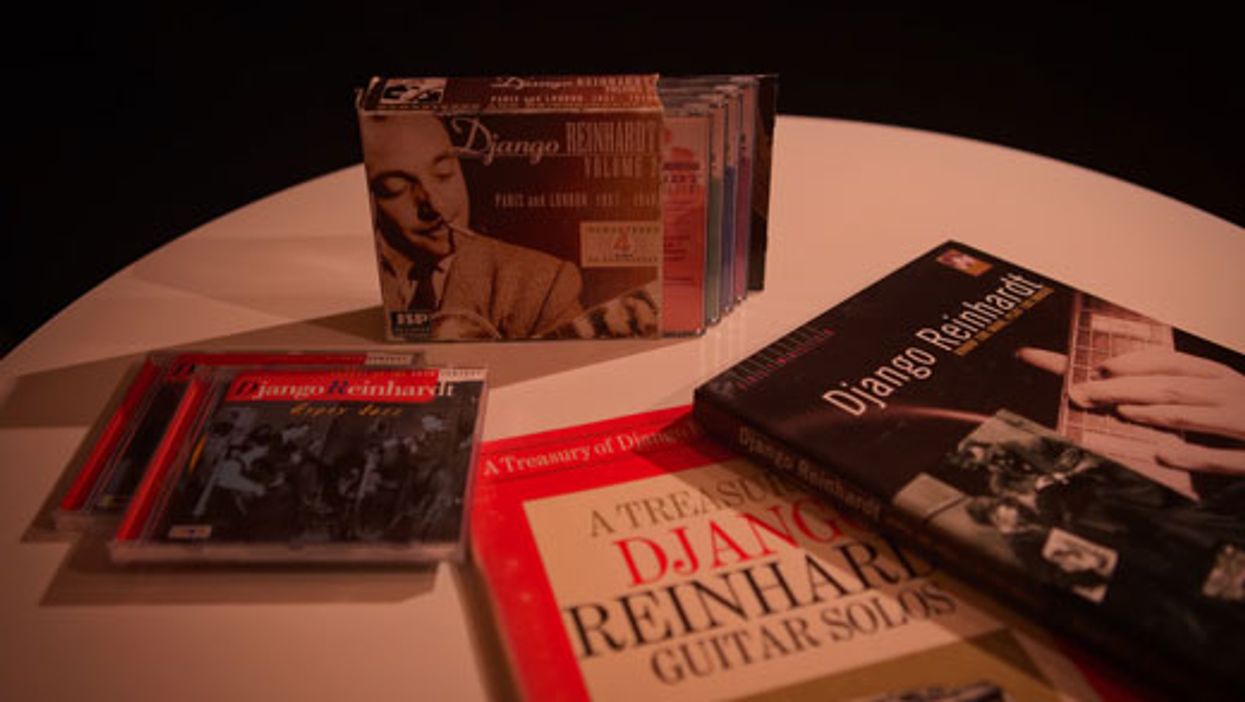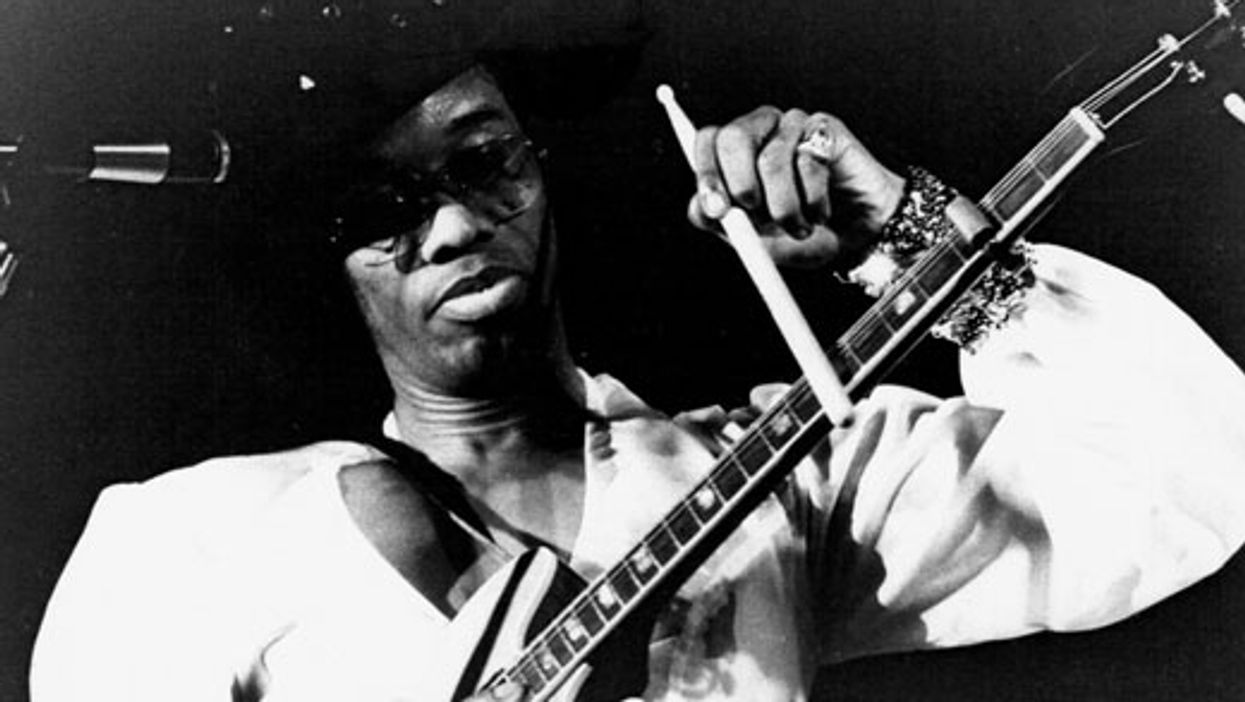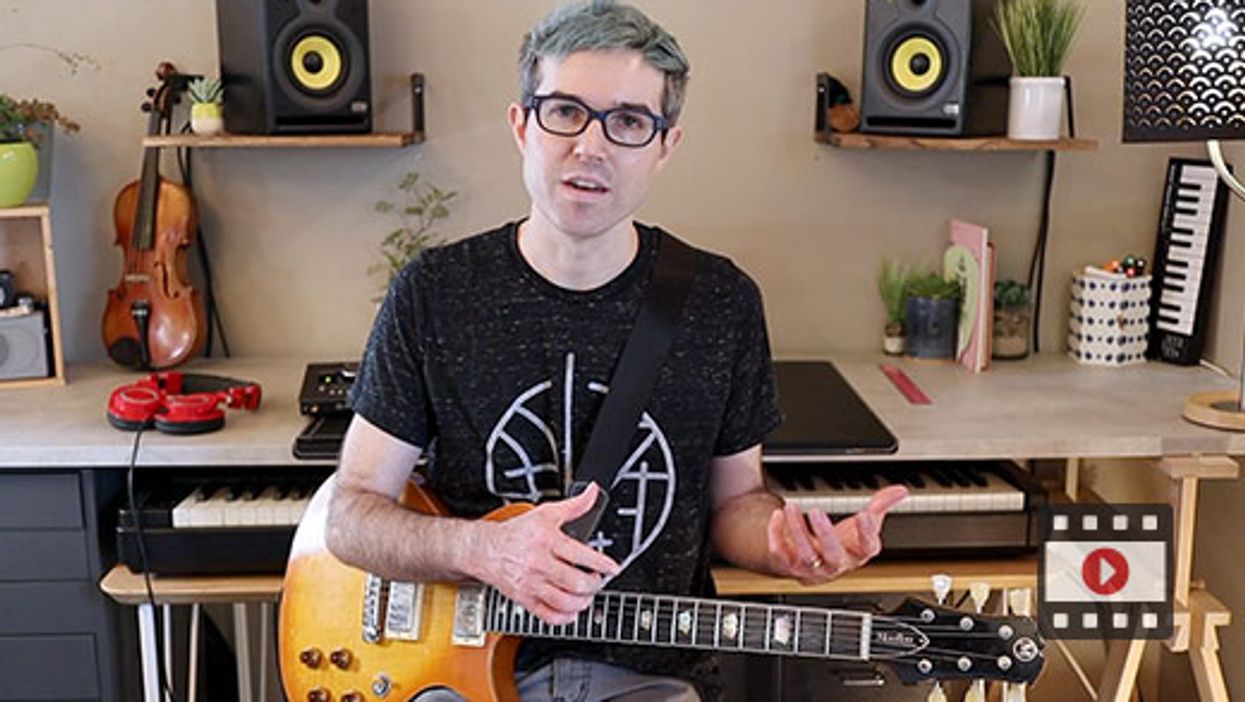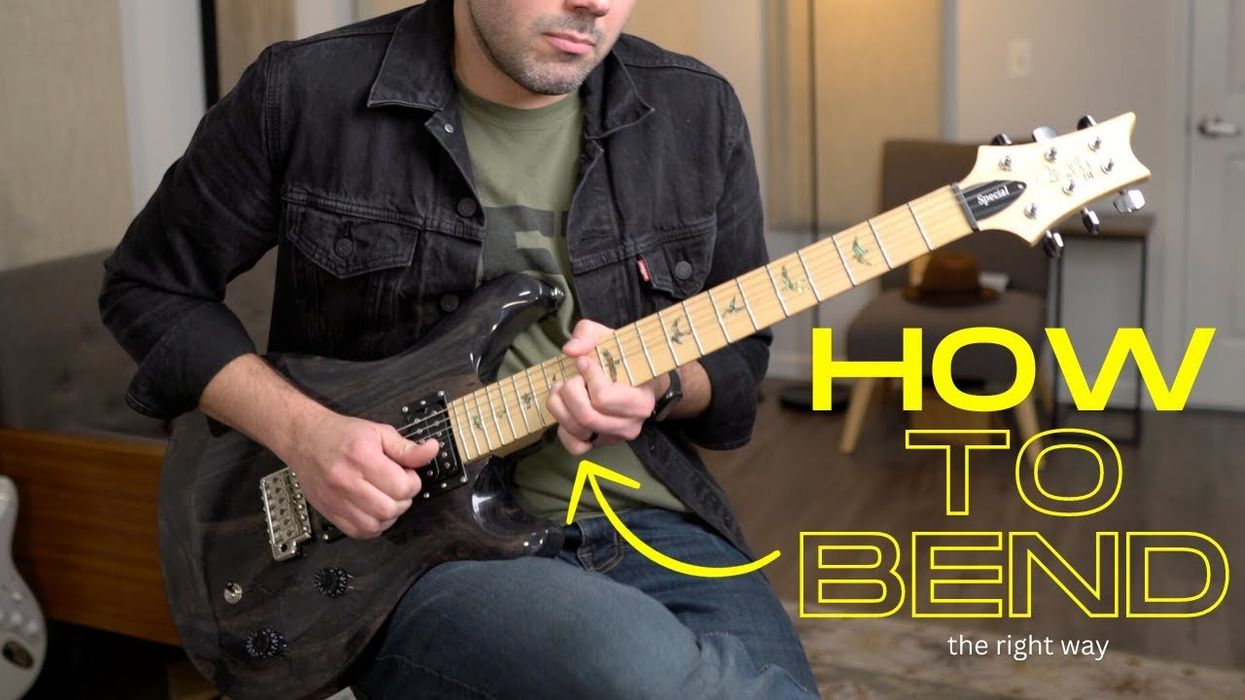Let’s play a quick game of Jeopardy! The category: Guitarists with Wildly Successful 50-Year Careers. The answer: With over 3,000 sessions under his belt, this guitarist has been a first-call session player, recording with artists such as Steely Dan, Michael Jackson, and Dolly Parton. He's also a successful solo artist, having released 36 albums, and a four-time Grammy Award winner. The question:
Who is Larry Carlton?
Perhaps unknowingly, we have all heard Carlton’s signature, lyrical guitar style more times than we can imagine, on a countless number of classic records, movie soundtracks, and TV themes. Just check out his impeccable touch and tone on Mike Post’s theme from TV’s “Hill Street Blues,” for which Carlton won the 1981 Grammy for Best Instrumental Performance.
Now, let’s break down his style with an exploration of some of his classic work with Steely Dan and over his solo career.
It Begins with the Blues
Carlton earned the nickname “Mr. 335” for his almost exclusive use of a Gibson ES-335 model during much of his early career. Known for his “sweet” sound, he seamlessly married the soul of blues, the spirit of rock, and the sophistication of jazz. The foundation for his playing, though, is decidedly the blues, and one of his early idols was blues master B.B. King. Traditional blues is a style with a somewhat purposefully limited vocabulary, most of which is drawn from the six-note blues scale (1–b3–4–b5–5–b7). All this means is that it’s the player’s style which must take center stage.
Carlton’s playing is brimming with personality, which he expresses in tastefully subtle ways. Ex. 1 emulates his distinct touch in songs such as “Blues Bird” from his classic 1982 solo album Sleepwalk.
It’s the nuances of Carlton’s playing with stand out here, as it’s more about how he plays the notes than the notes themselves. Notice how the slowness of measure 1’s initial bend and the overbend on beat 4 of measure 2 both pack a hefty punch. The vibrato for the Eb at the end of measure 2 doesn’t begin until after the note is held for a bit, allowing it to just hang in the air for a moment. Then in measure 3, the dot over the “and” of beat 3 indicates the note should be played staccato, or short. Similarly, the accents in measure 4 indicate to play those particular notes a bit louder.
It’s fun to note that a classic Carlton technique is the way he often chooses to pick notes on the higher strings exclusively using upstrokes. However, instead of using the usual flat part of the pick, the key here is to scratch the strings with its narrow inside edge, which lends a gnarly grit, as you can hear in Ex. 2.
These Ghosts Aren’t Scary
To capture Carlton’s style, we’re going to need to dip our toes ever so slightly into the pool that is jazz guitar. Don’t worry, though, you don’t have to be able to improvise over saxophone colossus John Coltrane’s “Giant Steps” to avail yourself of some of the style’s finesse and flavor.
Let’s look a key nuance of jazz phrasing that contributes to the character of Carlton’s playing—ghost notes. These notes are almost not played, sounded just enough to give a phrase a certain “bounce” that is so common in jazz. Steely Dan’s 1976 release The Royal Scam, was a coming-out party of sorts for Carlton, having contributed a number of soon-to-be classic solos, most notably in “Kid Charlemagne.” Ex. 3, however, is a motif he plays throughout the album’s title track. Meant to sound implied, ghost notes are often fittingly indicated in parentheses, as shown in our example. Play each of these softer, so as to make it sound as if they’re bouncing off of the ones which surround them.
Hitting All the Right Notes
Carlton’s vast knowledge of jazz harmony gives him the ability to add a variety of colors to his playing which aren’t common in blues or rock guitar. He accomplishes this by touching on extensions, notes built on top of a 7th chord that “extend” the chord. For example, some common extensions of a Cmaj7 chord (C–E–G–B), are its 9 (D), #11(F#) and 13 (A). Each of these notes has a distinct color that Carlton uses as if he’s painting on a canvas.
Ex. 4 is reminiscent of his playing on Miles Davis’ “So What” from his Grammy-nominated 1987 live album Last Nite. Played over a Dm11 chord, the phrase lands squarely on the 11 (G) on the first beat of measure 1, then continues with a series of descending arpeggios, touching on the 9 (E) and 13 (B). Play this phrase slowly, absorbing the unique character of each of these notes.
Here’s Carlton smokin’ on an alternate live version of this classic tune:
Ex. 5 is an example of how Carlton approaches using extensions in more of a rock setting. “Don’t Take Me Alive,” another song from The Royal Scam that showcases Carlton’s mastery, features this phrase in its intro solo.
Now, you’ve likely played this lick many times before. But it’s how Carlton implements it here that is striking. Using rock-style string bending, he directly targets the 9 (D) and 11 (F). How does he find them? Well, here’s a quick trick: Over a minor chord, you can often play the minor pentatonic scale a fifth above. So, over the Cm7 chord in Ex.5, instead of using the standard C minor pentatonic scale (C–Eb–F–G–Bb) Carlton uses G minor pentatonic (G–Bb–C–D–F) which readily makes the 9 (D) available via a host of basic pentatonic licks you almost certainly already know. It’s a jazzy take on rock playing without sounding like you’re trying to impress your friends with some highfalutin jazz licks.
Here’s yet another instance (Ex. 6) of Carlton targeting extensions, this time within a beautiful fill over a major chord in “Daddy Don’t Live in That New York City No More” from Steely Dan’s 1975 album Katy Lied.
How does he do it this time? We’re in the key of E minor, with Cmaj7 functioning as the bIVm chord, and he simply draws from the E minor scale (E–F#–G–A–B–C–D). Not impressed? Take a closer look to see how Carlton views the fretboard as a palette of colors, aware of how each note in the scale functions over the chord. He subsequently targets the major 7 (B), 9 (D), and 11 (A), letting the notes ring over each other for effect.
Ex. 7, our final music example, is a Carlton-style phrase that makes use of some of the key elements we’ve discussed above: targeting the 9 of the Dm9 and Fm9 chords (E and G, respectively), with the addition of some well-placed staccato, accented, and ghosted notes.
Larry Carlton’s unique and soulful style most certainly developed out of his keen melodic and rhythmic sense. But it also leans heavily on the musical nuances he has consistently mined throughout his storied 50-year career. Focusing on them in your own playing can be a path to finding your own unique voice on guitar.




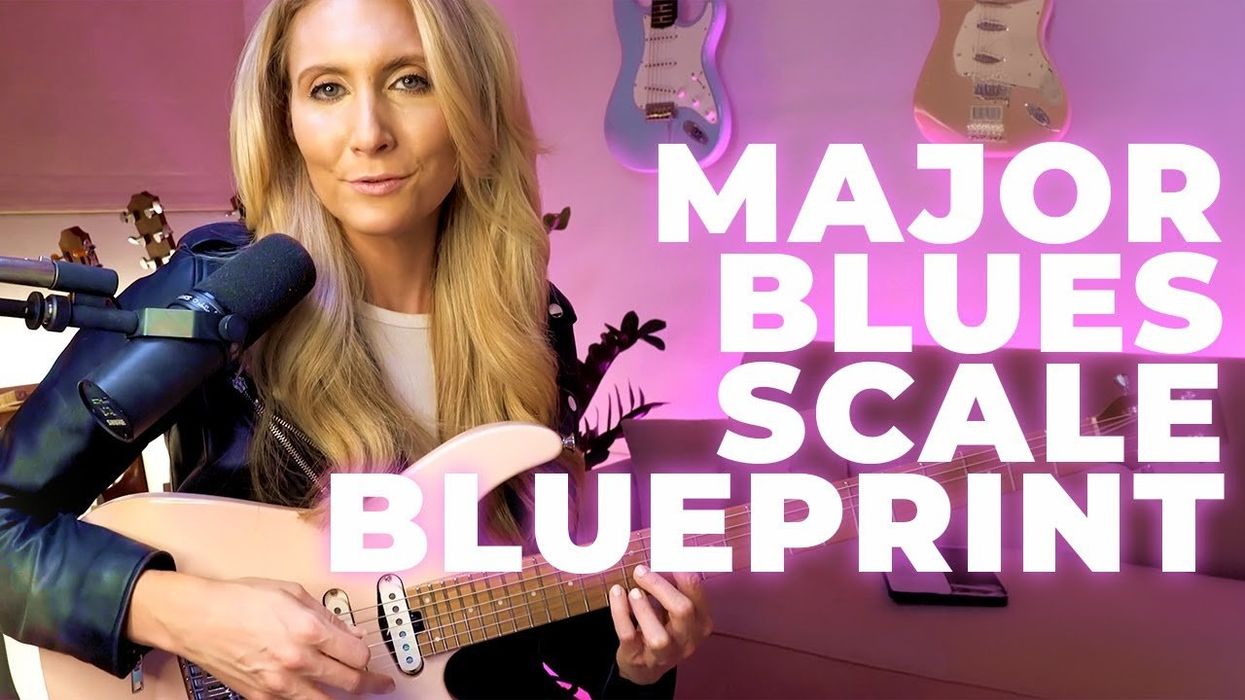

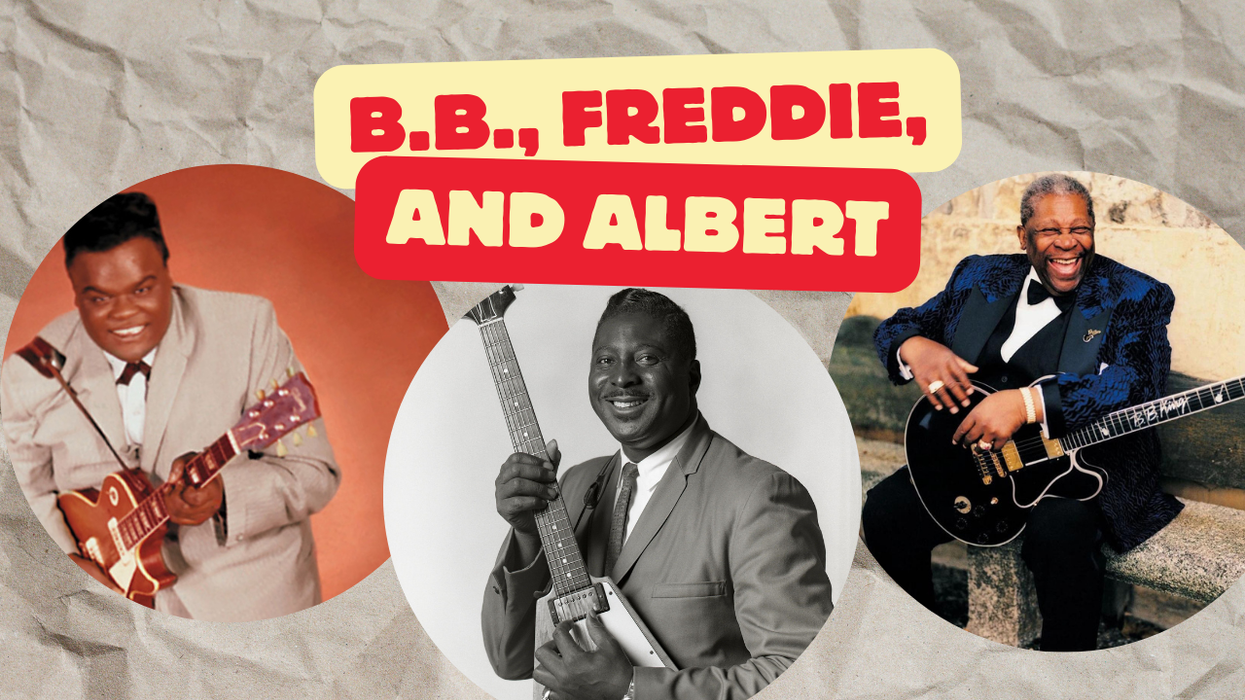

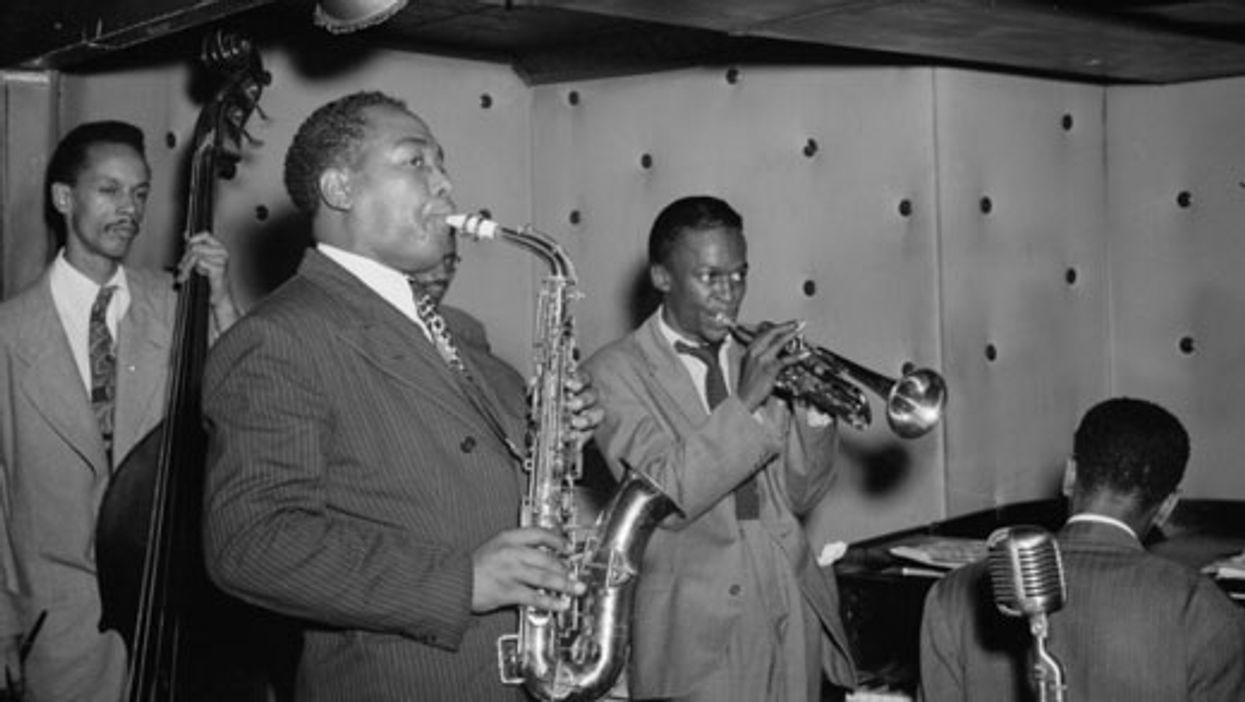
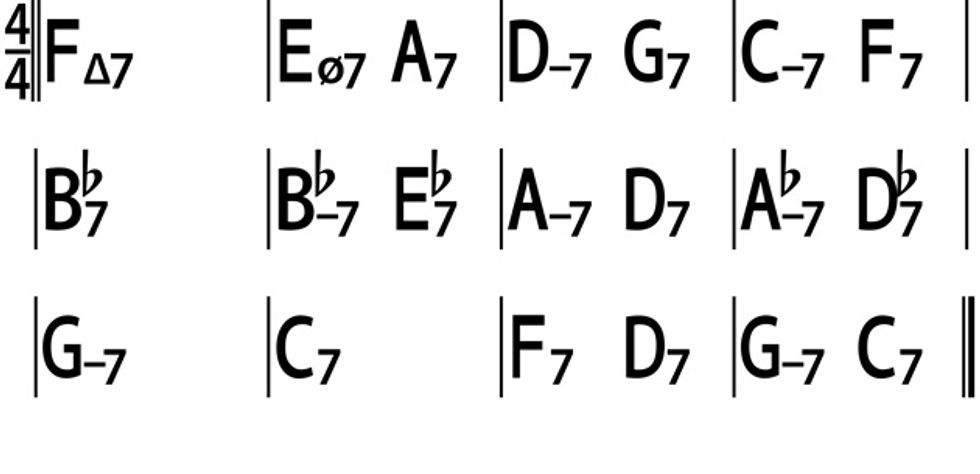



![Rig Rundown: Russian Circles’ Mike Sullivan [2025]](https://www.premierguitar.com/media-library/youtube.jpg?id=62303631&width=1245&height=700&quality=70&coordinates=0%2C0%2C0%2C0)


